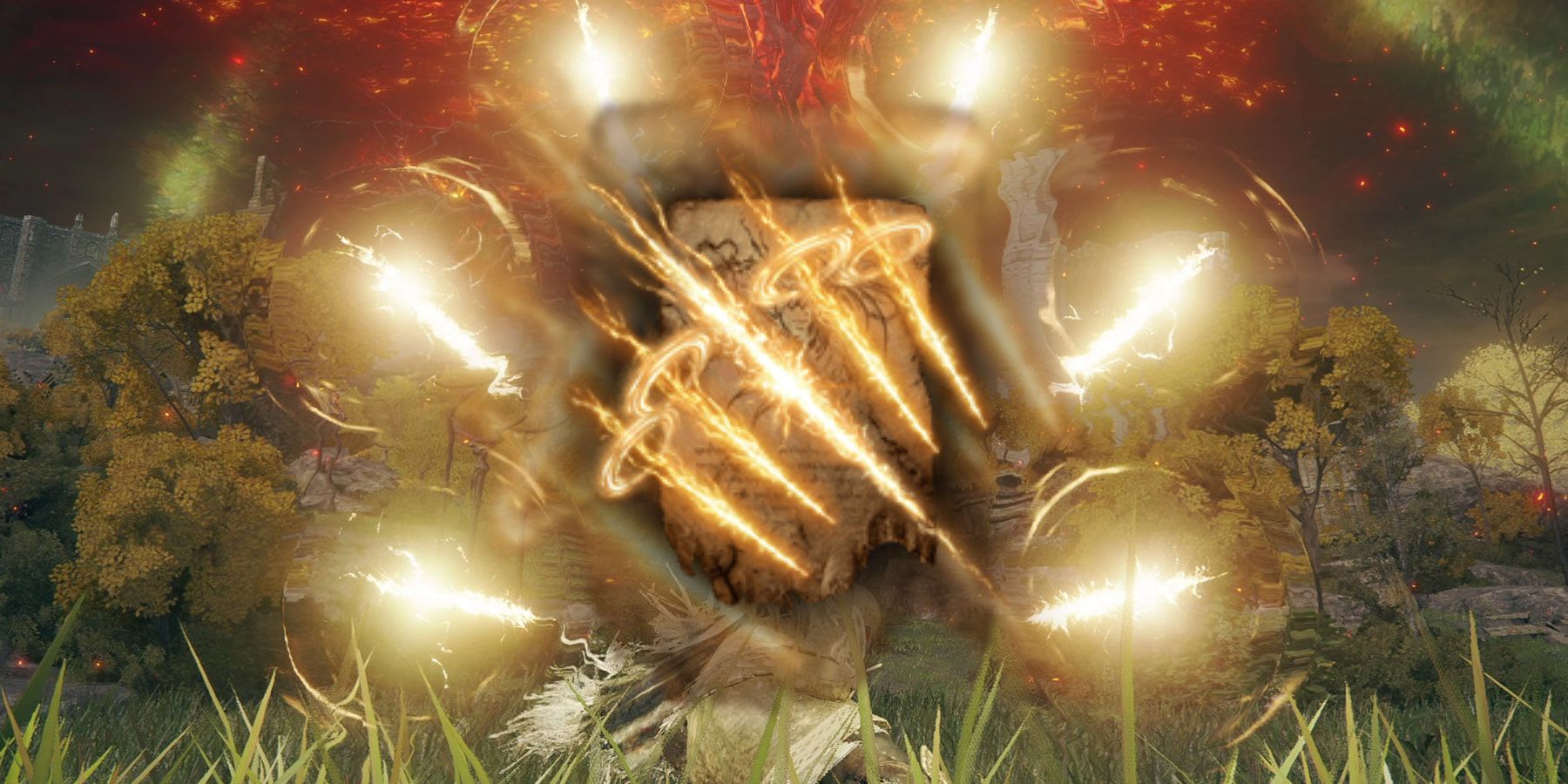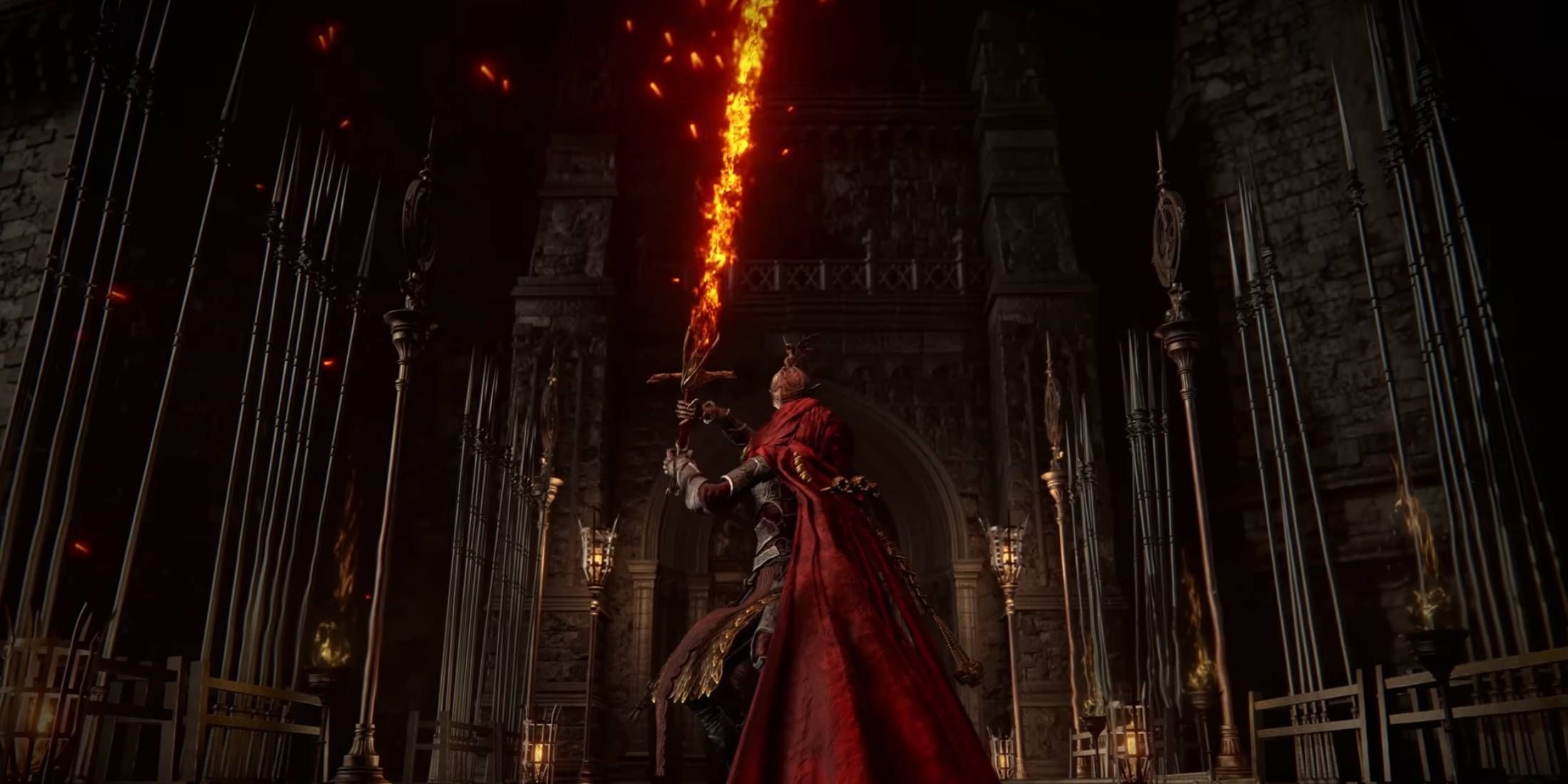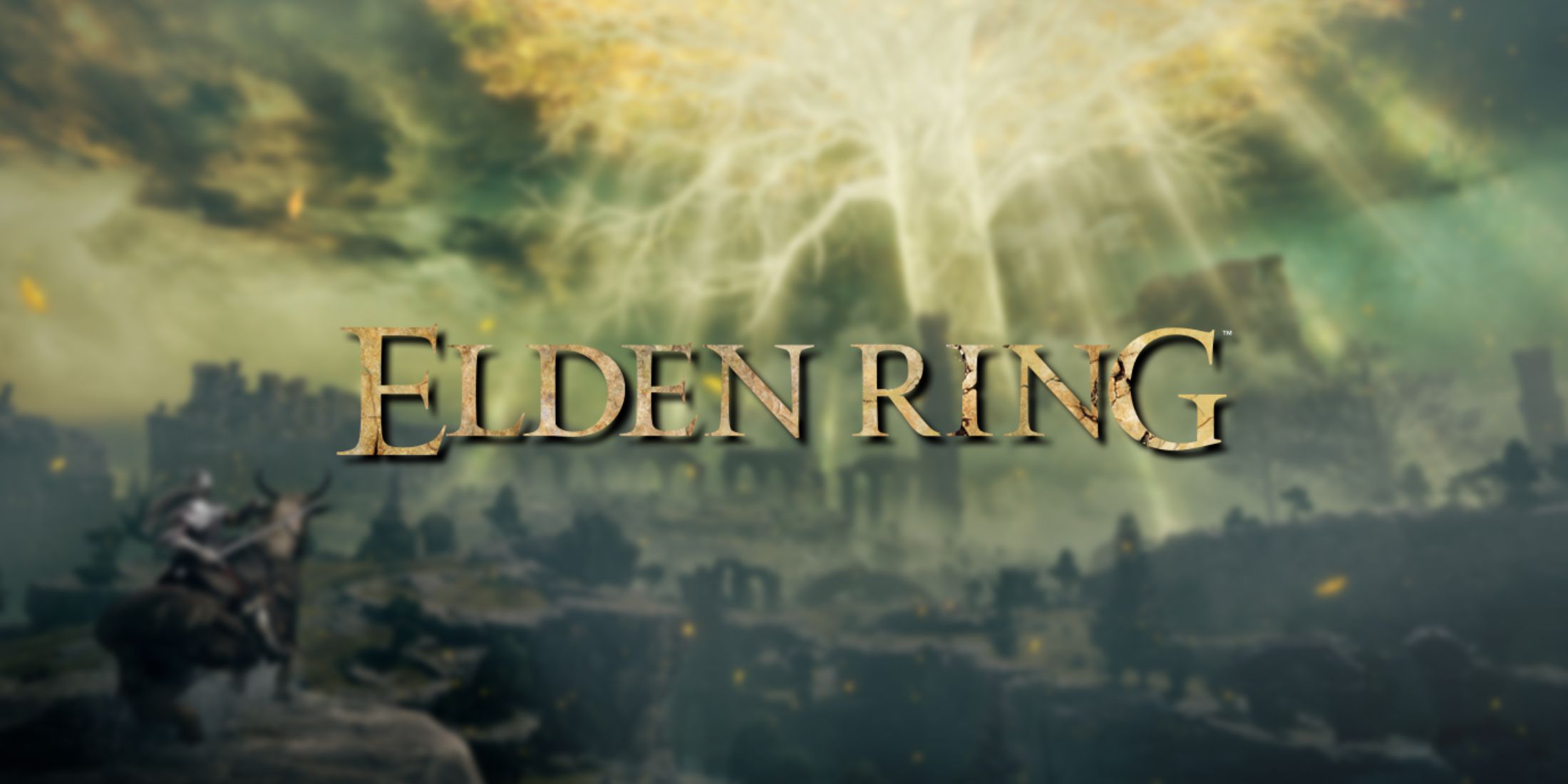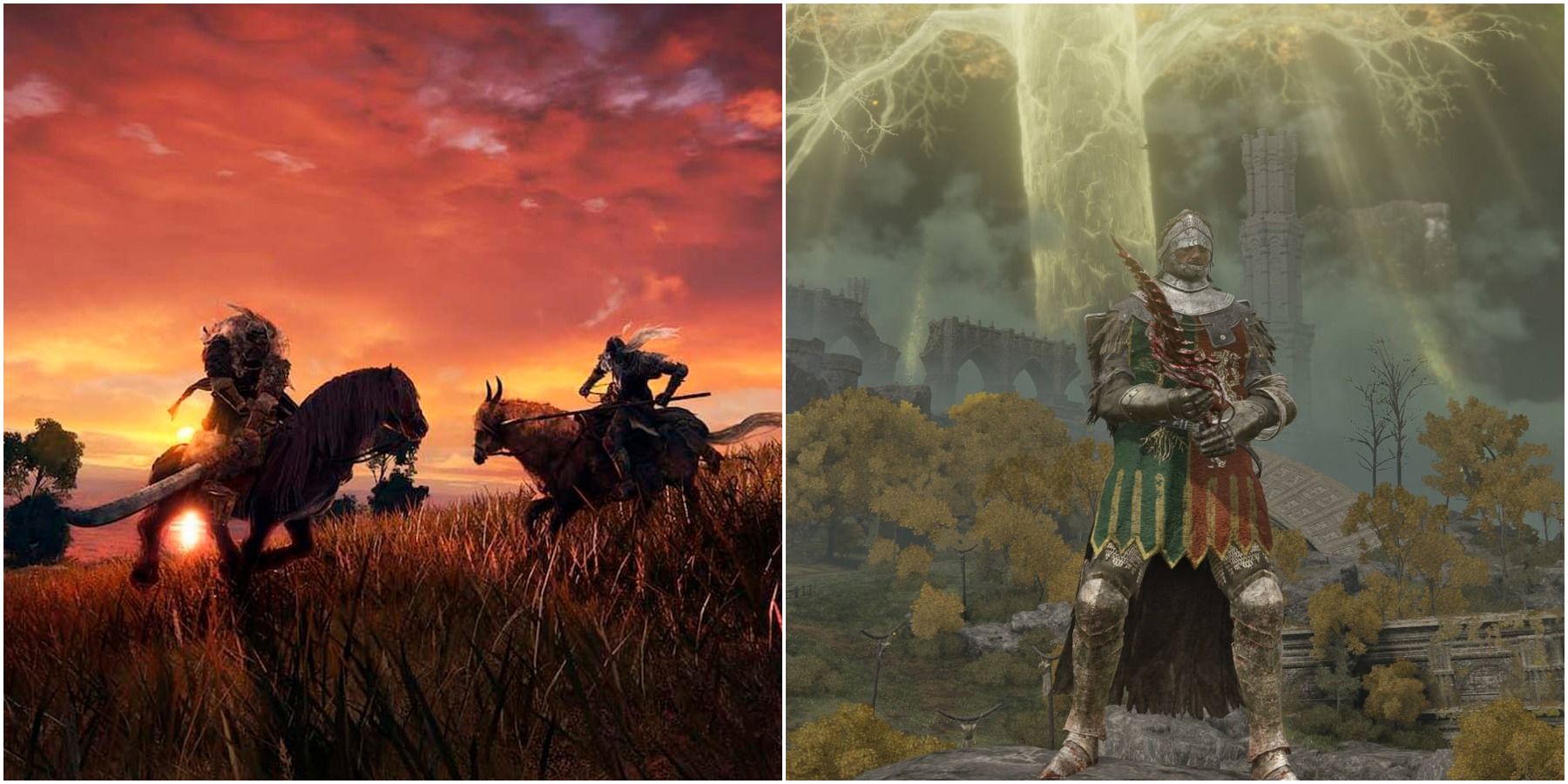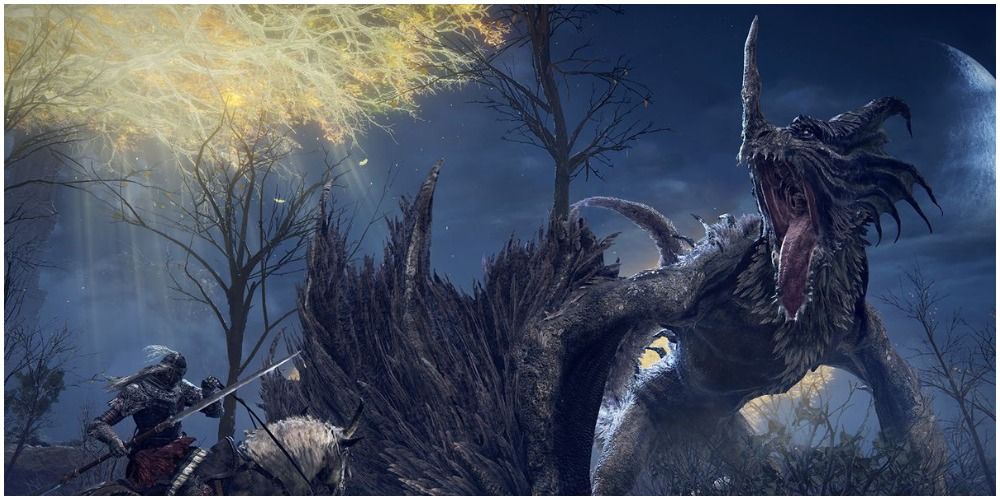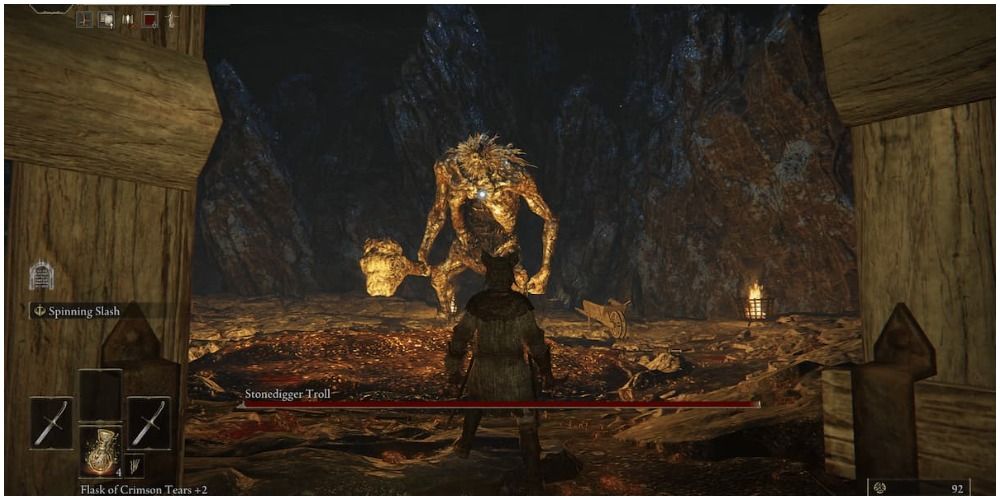It is no secret that Elden Ring was developed through a lot of mythological inspirations. The same is true for many fantasy games such as God of War, Final Fantasy, and Okami. Mythology never goes out of style as a source of imagination, and Elden Ring proves that with its enemies, locations, and names. Like other games, its weapons in particular can be a little familiar to those who are knowledgeable about mythology.
According to Techradar, there are about 200 different weapons to find in the game. Elden Ring players will have to tailor their stats to equip them, but there is certainly something for everyone. These weapons include daggers, claws, scythes, flails, swords, axes, torches, whips, spears, halberds, staffs, seals, bows, crossbows, war-hammers, twin-blades, and more. With so many options, it is not too surprising that there are some significant connections between the Tarnished's arsenal and various mythologies.
Weapons Of Dragon Mythology
All dragons stem from folklore and mythology, as their stories are internationally recognized. There are famous Arabian dragons like Bahamut, Japanese like Orochi, and European dragons like wyverns. Dragons are all over Elden Ring, and with them comes a lot of dragon-themed weaponry. These include the Dragon Greatclaw, Magma Wyrm's Scalesword, Dragonscale Blade, and Dragon King's Cragblade.
Like mythology, video games love dragons. Elden Ring has a lot of dragon bosses as well as various small wyrms and lesser dragons. All their designs are European-based, having four legs, two wings, and one head. The big bosses are unique in terms of what elements they breathe and how much they fly. Some of them even carry weapons in their mouth.
Giant, Golem, And Troll Weapons
Giants, like dragons, are from a variety of cultures. They appear in Shintoism, Hinduism, Norse, Greek/Roman, Abrahamic, and Celtic Mythology. Their nature and stories are pretty different depending on the mythology, but they are all around in Elden Ring as mostly enemies. Due to their origins in myth, weapons with their names such as Giant-Crusher and Giant's Seal are mythology-inspired as well.
Golems come from Jewish folklore and are known as creatures made of matter such as mud or clay. Stories with them often are about being created by humans to be controlled for some purpose. Like the giants, there are a number of golems around in Elden Ring. They are about the same size as the giants as well, but they drop mythology-inspired weapons like Golem's Halberd and Golem Greatbow.
As for trolls, they are from Scandinavian folklore and Norse myth. They are known to live in rocky areas of nature and their designs greatly change from story to story. Elden Ring's trolls are everywhere and are often enslaved by people to protect loot or forts. There are weapons based on troll myths as well in the game, such as the Troll's Hammer, Golden Sword, and Knight's Sword.
Greek And Roman Mythology
Greek and Roman mythology are popularly used to inspire video games and fantasy stories. Two weapons relate to Nox, the Roman version of Nyx, who is the goddess of the night. These weapons are Nox Flowing Sword and Flowing Hammer. There is also the Hand of Malenia, a weapon named after a boss in the game. Some believe that Malenia can be cased on Melainia from Greek mythology, who was a nymph and daughter of a river god. In some legends, she is also the daughter of Hades and Persephone.
In fact, many weapons relate to Hades and Chonros. The Grim Reaper, which is a character derived by a combination of Father Time (Chronos) and the harvest god, Cronus, is what made scythes so popular as video game weapons. Elden Ring has plenty of scythe weapons, so they are all myth-inspired. The Prince of Death Staff relates to Hades and other death gods. The Forked Greatsword also resembles Hades' weapon of choice, a bident, which is a two-pronged weapon just like the greatsword. Outside of Hades and Chronos, Elden Ring's Sword of Milos relates to a volcanic island in Greece that is rich in mythological arts and allusions. Lastly, there is Marika's Hammer, which may be based on Marica from Roman mythology. Like Melainia in Greek myths, she was a nymph.
Other Mythological Weapons
There are plenty more mythology-inspired weapons in Elden Ring. The Astrologer's Staff is a big one, because most astrological terms come from Greek and Roman myths. There is also the halberd, Lucerne, which shares a name with a lake in Switzerland which houses legends of ghosts, giant skeletons, and dragons. Additionally, there is the Lazuli Glintsone Sword, which refers to Lapus Lazuli, the favored jewel of the Sumerian goddess of love.
The Ghostflame Torch is inspired by Japanese mythology, which held the belief of ghost light called onibi. It is believed this fire is the spirits of the dead, particularly resentful people. Gargoyle weapons like the Blackblade, Greatsword, and Halberd are also mythological products. Back in the day, gargoyles were not just for show. They were believed to guard off against evil spirits. This is why they were most often built around churches. Elden Ring gargoyles such as the Valiant Garoyle, however, are not so friendly. Other notable mythological weapons include the Regalia of Eochaid, as Eochaid is the name of a King in Irish myth. Some of wondered if Ghiza's Wheel was inspired by the Giza Plateau, home of the Great Sphinx from Egyptian mythology.
Elden Ring is out now for PC, PS4, PS5, Xbox One, and Xbox Series X.

